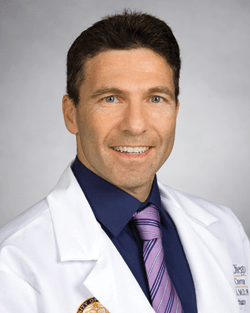Proper management of agitated patients presenting to the ED is essential to keeping staff safe and ensuring appropriate care. In many cases, agitation cases can be managed with non-pharmacologic methods, but medications are becoming increasingly important in acute agitation in EDs. In the February 2012 Western Journal of Emergency Medicine, my colleagues and I at the American Association for Emergency Psychiatry published consensus recommendations on best practices for using medication to manage agitated patients in emergency settings.
Rationale & Goals When Calming Patients
Non-pharmacologic approaches—verbal de-escalation, quieting the room, and dimming the lighting—should be attempted before medications are administered. When initial verbal methods fail to calm patients, medication may be necessary. Clinicians should make a provisional diagnosis on the likely cause of the agitation because this can help guide medication choices. In many cases, agitation increases over time during ED treatment. By intervening early, to preempt the potential escalation of agitation to severe and dangerous levels, it may be possible to include patients in the medication decision process and use lower doses.
The goal of using medication in agitated patients is to calm them without inducing sleep. Excessive sedation may interfere with assessment and treatment of underlying conditions. To the extent possible, medications should be used that specifically target the cause of agitation based on the provisional diagnosis.
“The goal of using medication in agitated patients is to calm them without inducing sleep.”
No class of medication is considered “best” in all cases of agitation, but three drug classes have been studied and used most frequently, including first- and second-generation antipsychotics and benzodiazepines. Although these drugs may manage acute agitation, this does not imply that they directly address the underlying etiology of the agitation.
Important Considerations Using When Using Medication
According to available evidence, our workgroup provided these other key consensus recommendations when managing agitated patients with medications:
1. If agitation is the result of a medical condition or delirium, clinicians should attempt to treat the underlying cause instead of simply medicating. Antipsychotics are preferred over benzodiazepines in this situation.
2. Benzodiazepines are preferred when agitation appears to be due to stimulant intoxication.
3. Antipsychotics are indicated as first-line management of acute agitation with psychosis of psychiatric origin (eg, a schizophrenic who is agitated due to delusional paranoia).
4.When an antipsychotic is indicated for treating agitation, certain second-generation antipsychotics are preferred over haloperidol or other first-generation antipsychotics.
5. Agitation secondary to intoxication with a central nervous system depressant (eg, alcohol) may be an exception in which haloperidol is preferred. Benzodiazepines may have a synergistic respiratory depression effect with alcohol. Few data are available on second-generation antipsychotics in this specific clinical scenario.
6. In cases when haloperidol is used (with the exception of alcohol intoxication), clinicians should consider administering it with a benzodiazepine to reduce extrapyramidal side effects unless contraindications to use of this medication exist.
Keep Up to Date
It’s important to stay abreast of research on managing agitation with medications in the ED. By staying knowledgeable and practicing the most appropriate interventions for agitated patients, emergency clinicians everywhere may alleviate some of the stress on the ED workplace.



 Janine Anthes
Janine Anthes